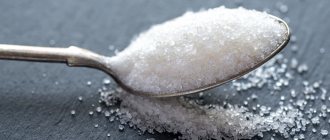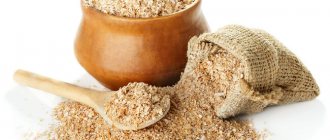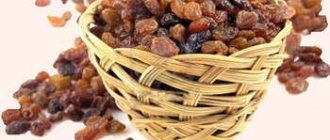A favorite breakfast product is cottage cheese and its analogues. These products are available in a wide range. There are many variations of this product with different tastes: mushrooms, salmon, herbs, etc. Please note: high-quality curd cheese should contain only natural additives, i.e. pieces of fish, mushrooms, herbs. When artificial flavors and synthetic fillers are included in it, the benefits of such a valuable product can be reduced to “no”. In our material today we will present the types, composition of curd cheese and calorie content.
Curd cheese: composition
In a natural product, cream or milk, salt, and milk starter must be indicated. If the packaging contains different types of preservatives or flavor enhancers, such a product should be discarded. High-quality cheeses of this type contain valuable animal protein in sufficient quantities, as well as a lot of other, no less useful natural substances. 100 g of cheese contains 10% calcium and 20% phosphorus of the daily value that a person needs every day. As for the calorie content of curd cheese, there is an average of 317 kcal per 100 g. However, this indicator may change in one direction or another depending on what flavoring additives were included in the product.
Taste and calorie content of Almette cheese
The classic version of curd cheese has a delicate, pronounced creamy taste with a slight saltiness.
Advertising - Continued below
Since the cheese is made from a large amount of milk and cream, it is quite high in calories. 100 grams of the standard “Creamy” Almette product contains 287 kilocalories. Therefore, the daily intake of Almette cheese is 50 grams. Constant consumption of cheese in large quantities can negatively affect your figure and, in the worst case, even your health.
How to choose the right one
Ideally, a quality product should be tender and uniform in consistency. The presence of whey in it, and even more so mold on the surface, indicates that the curd cheese is of low quality or spoiled. If the packaging indicates that the product is thermalized, this means that it has received a special heat treatment and can be stored for a long time (up to 4 months) without changing its consumer and quality characteristics.
Ricotta
Cheese made in the best traditions of Italian cheese making. It is produced from fresh milk of cows. In Italian, the word “ricotta” translates as “newly boiled,” which gives an idea of the method of preparation. After the mass is removed from the whey, some pieces of the curd still remain. The further technological process proceeds as follows: the whey is boiled again until the pieces rise to the surface. After this, they are removed from the whey and left to mature for several days. Young ricotta cheese has a velvety, slightly sour taste. In Friol it is customary to smoke this cheese. Some of the most popular varieties of this cheese, in addition to the milk mixture, include pepper and herbs. The calorie content of ricotta curd cheese is 174 kcal/100 g.
Feta
This cheese is prepared according to traditional Greek recipes. To get real cheese, you should use only sheep's milk. According to an old recipe, the milk that had just been given out was poured into a bag from the stomach of a goat, and resin from fig tree branches was added to it. Today, when preparing, a starter is used to curdle the milk faster. After the whey has been drained, the wet mass is placed in linen bags and pressed. When the mass dries, it is cut into pieces and placed in brine. The calorie content of this cheese is 264 kcal/100 g.
History of Almette cheese
Almette cheese originated in the foothills of the Bavarian Alps on home farms in 1988.
Then she organized a Bavarian cheese factory and launched the production of a dairy product according to a traditional Alpine recipe. This cheese is famous for its high quality. The original production technology has been followed by cheesemakers throughout the history of cheese. Advertising - Continued below
Cheese appeared in Russia in 1994. On store shelves you can find seven different flavors of Almette cheese:
- creamy;
- with greens;
- with cucumbers and herbs;
- with porcini mushrooms;
- with Italian tomatoes;
- with garlic;
- with Maasdam cheese.
In some regions, manufacturers produce unusual Almette with paprika, strawberries or cherries.
Mozzarella
This incredibly tasty Italian cheese is usually made from buffalo milk. Curdled milk is placed in warm water, where it becomes very elastic and eventually breaks down into fibers, which in turn, when placed in hot water, curl into balls. This is what mozzarella cheese looks like. It has a snow-white hue, a sour taste and the smell of milk. Such cheese is placed and stored in whey or brine, but its shelf life is rather short. Some cheese makers prefer to smoke this cheese, thereby prolonging its storage. In the modern world, it is customary to make this cheese from cows' milk, but its taste has nothing in common with mozzarella made from buffalo milk. The calorie content of curd cheese is 280 kcal per 100 g of product.
Cheese calories | table of KBJU cheeses
| Product | Squirrels | Fats | Carbohydrates | Kcal |
| Adyghe cheese | 18.5 | 14 | 0 | 240 |
| Altai cheese | 26 | 26.5 | 3.5 | 356 |
| Alpine cheese | 25 | 27 | 0 | 353 |
| Amber cheese | 31 | 10 | 10 | 220 |
| Appenzeller cheese | 24.7 | 31.7 | 2 | 403 |
| Biysky cheese | 24.2 | 29.9 | 0 | 371 |
| Cheese Bongrain Fall Epi | 28.8 | 16 | 1.8 | 267 |
| Brie cheese | 21 | 23 | 0 | 291 |
| Brynza cheese (made from cow's milk) | 17.9 | 20.1 | 0 | 260 |
| Brynza cheese (made from sheep's milk) | 14.6 | 25.5 | 0 | 298 |
| Cheese Brynza Serbskaya | 11.9 | 15.5 | 2.6 | 208 |
| Cheese Vyrussky | 29 | 15 | 0 | 258 |
| Gouda cheese | 25 | 27 | 2 | 356 |
| Dutch cheese | 26 | 26.8 | 0 | 352 |
| Gorgonzola cheese | 19 | 26 | 0 | 330 |
| Cheese Mountain | 29.3 | 29.7 | 1 | 400 |
| Grana Padano cheese | 33 | 28 | 0 | 384 |
| Gruyère cheese | 27 | 31 | 0 | 396 |
| Danish cheese | 25 | 24.3 | 0 | 330 |
| Cheese Village | 10.3 | 5.3 | 3 | 103 |
| Cheese Dzhugas | 33 | 25 | 1.7 | 364 |
| Homemade Cheese | 12.7 | 5 | 4 | 113 |
| Cheese Dor Blue | 21 | 30 | 0 | 354 |
| Dor Blue cheese a la creme | 7 | 25 | 3 | 265 |
| Cheese Dorogobuzhsky | 20 | 28 | 0 | 332 |
| Camembert cheese | 21 | 23 | 0 | 291 |
| Cheese Cantali | 26.7 | 14.1 | 0 | 234 |
| Fermented milk cheese | 31 | 0.7 | 0.3 | 133 |
| Goat cheese | 21.3 | 21.7 | 0.7 | 290 |
| Smoked sausage cheese | 23 | 19 | 0 | 271 |
| Smoked Cheese | 27.7 | 25.3 | 7.3 | 380 |
| Kostromskaya cheese | 25.2 | 26.3 | 0 | 345 |
| Lambert cheese | 23.7 | 30.5 | 0 | 377 |
| Lambert cream cheese | 23.7 | 32.5 | 0 | 395 |
| Cheese Lambert Tilsiter | 24 | 25 | 0 | 339 |
| Cheese Maasdam | 23.5 | 26 | 0 | 350 |
| Mascarpone cheese | 4.8 | 41.5 | 4.8 | 412 |
| Cheese Mondzeer | 22 | 20.3 | 6.7 | 280 |
| Mozzarella cheese | 18 | 24 | 0 | 240 |
| Oltermani cheese | 29 | 17 | 0 | 270 |
| Parmesan cheese | 33 | 28 | 0 | 392 |
| Processed cheese | 16.8 | 11.2 | 23.8 | 257 |
| Cheese Polessky | 23 | 14.3 | 0 | 221 |
| Cheese Poshekhonsky | 26 | 26.5 | 0 | 350 |
| Cheese Pribaltiyskiy | 30 | 9 | 0 | 209 |
| Cheese Raclette | 22.7 | 28 | 1 | 357 |
| Ricotta cheese | 11 | 13 | 3 | 174 |
| Cheese Rochischio | 32 | 25 | 0 | 366 |
| Roquefort cheese | 20 | 28 | 0 | 337 |
| Russian cheese | 24.1 | 29.5 | 0.3 | 363 |
| Cheese Smetankovy | 21 | 27.5 | 0 | 332 |
| Cheese Stepnoy | 24 | 26.3 | 1.7 | 350 |
| Sulguni cheese | 20 | 24 | 0 | 290 |
| Cheese Tilsiter | 27.8 | 25 | 0.1 | 334 |
| Uglich cheese | 25.8 | 26.3 | 0 | 347 |
| Cheese Favita | 14 | 12 | 3 | 176 |
| Farmer's cheese | 18.5 | 14.1 | 1.5 | 207 |
| Chees Feta | 17 | 24 | 0 | 290 |
| Philadelphia cheese | 5.4 | 24 | 3.2 | 253 |
| Cheese Hollender | 28 | 17 | 0.1 | 265 |
| Cheddar cheese | 23 | 32 | 0 | 392 |
| Cheese Chechil | 19.5 | 4 | 0 | 140 |
| Chechil cheese brine smoked | 19.5 | 26 | 2.2 | 320 |
| Swiss cheese | 24.9 | 31.8 | 0 | 396 |
| Edam cheese | 24 | 26 | 0 | 330 |
| Smoked Edam cheese | 24.8 | 25 | 0 | 334 |
| Emmental cheese | 28.8 | 29.7 | 0.1 | 380 |
| Amber processed cheese | 7 | 27.3 | 4 | 289 |
| Jarlsberg cheese | 28 | 28 | 0 | 364 |
| Cheese Jarlsberg Light | 31 | 16 | 0 | 268 |
| Cheese Yaroslavl | 26.2 | 26.6 | 0 | 350 |
On this topic
Calorie deficit for weight loss
Creamy
Hochland Kremette is one of the cream cheeses with a light, delicate taste and interesting structure. It contains cottage cheese, pasteurized milk, milk-clotting enzyme, and bacterial starter culture. It should not contain any flavorings or harmful additives. The calorie content of Hochland Kremette is 297 kcal. Curd cheese is widely used in cooking and confectionery. Its taste goes well with the taste of fish. Due to the fact that it can easily be given the desired shape, it is often used for making rolls.
With greens
The Hochland brand of curd cheese with herbs has long found its consumers on the market. The product has a very delicate, textured curd-creamy consistency, an unusually rich aroma and a pleasant taste with a barely noticeable curd sourness. The cheese spreads perfectly, does not spread and retains its shape. Sold in plastic packaging with a lid under which there is foil. This product can be stored for up to 4 months, open packaging should be used within a week if stored in the refrigerator. The composition of curd cheese with herbs includes milk (cream), cottage cheese, bacterial starter, a special enzyme of microbial origin, salt, vegetables, milk powder, onion essence, citric acid. The product contains vitamins and minerals. The calorie content of cheese per 100 g of product is 212 kcal.
Its use can provoke allergic reactions due to the fact that it contains milk protein. In addition, it is quite high in calories, so it should be consumed in moderation. Curd cheese is used as a snack in combination with vegetables.
Benefit for health
First of all, the product is good for teeth. After all, it contains a large amount of calcium and a small amount of lactose. Scientists have found that regular consumption of cheese reduces the risk of dental plaque. It promotes the deposition of phosphorus and calcium in the teeth, which in itself contributes to the strength of tooth enamel. A high-quality protein called casein forms a protective film on the surface of the teeth, which protects our teeth from damage. The use of this product is an excellent cancer prevention. It contains linoleic acid and sphingolipids. These substances protect the body from the harmful effects of free radicals. Vitamin B is also responsible for reducing the risk of developing cancer. Regular consumption of cheese improves the functioning of the body and helps to avoid tumors in the ovarian and prostate areas. The product is rich in vitamins, macro- and microelements, so its regular consumption improves the functioning of the body's immune system. Cheese contains an amino acid called tryptophan. It helps relieve stress and improves sleep. Children, pregnant women and the elderly should eat cheese regularly. Calcium and vitamin B are essential for the formation and strengthening of cartilage and bones. And the excipients, a considerable dose of which are contained in the product, contribute to better absorption of calcium. For osteoporosis, it is not enough to consume calcium (after all, it is poorly absorbed without the accompanying components). You need protein and a whole range of vitamins, with which the product is enriched
Therefore, it is worth paying special attention to cheese for children with insufficient body weight, as well as women after menopause. If you suffer from migraines, then you need to include cheese in your diet. Calcium has been proven to help relieve severe headaches. Recently it became known that the beneficial substances contained in dairy products help women around the world cope with PMS more easily. Cheese should be consumed regularly by pregnant women
Scientists, along with doctors, believe that protein, calcium and B vitamins are simply necessary for expectant mothers to give birth to healthy and strong babies. Unsaturated fatty acids contained in the product reduce the risk of developing diabetes. Cheese is no less useful for people who play sports. A considerable amount of protein allows the body to recover faster after intense training. Phosphorus reduces muscle pain. Scientists have proven that eating cheese improves heart function. Although 15-25 g of cheese per day is not contraindicated for people suffering from hypertension, they should choose a product with a low salt content. This will avoid spikes in blood pressure. A cheese diet for people with cardiovascular diseases should be based on the consumption of Feta, Mozzarella and Ricotta.
The substances contained in this product help improve the condition of hair, nails and skin. I would like to debunk the myth that cheese should not be consumed if you have skin problems. Many people think so, since it contains a considerable amount of fat. However, B vitamins contribute to the regeneration of the dermis, its natural radiance and healthy complexion. Given this fact, it is not surprising that the wine and cheese diet is so popular among Italian and French beauties.










